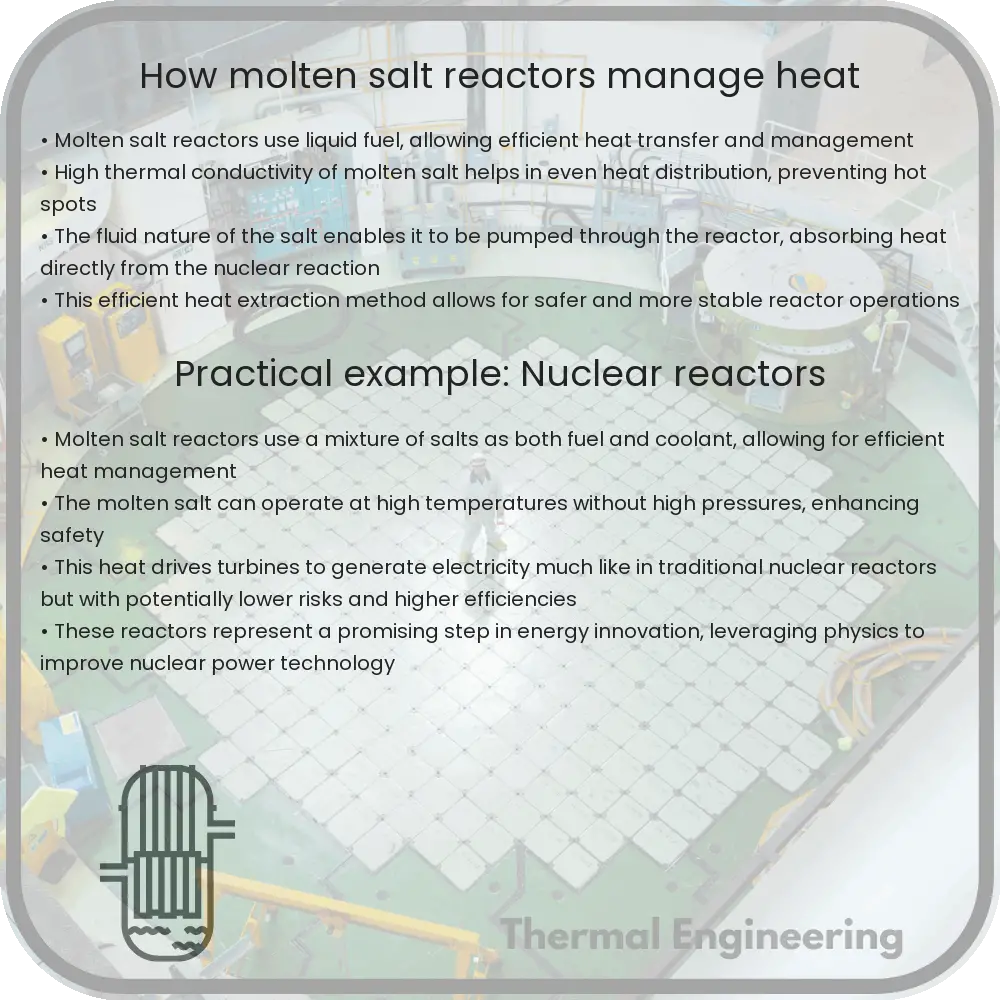Learn about the efficiency of heat management in Molten Salt Reactors (MSRs), their operation, safety features, and the latest advancements in this innovative nuclear technology.

Understanding Heat Management in Molten Salt Reactors
Molten salt reactors (MSRs) represent a class of nuclear reactors that hold significant promise due to their high efficiency and safety features. One of the critical aspects of MSR operation is the management of heat, a fundamental challenge in any nuclear reactor. MSRs offer unique solutions to heat management which leverage the properties of their primary coolant – molten salt.
How MSRs Work
Unlike traditional reactors that use solid fuel rods and water as coolant, MSRs use a fluid mixture of molten salts as both coolant and fuel solvent. This liquid fuel flows continuously through the reactor core, absorbing heat generated from nuclear fission, then circulates through a heat exchanger where the heat is transferred to a secondary coolant loop. This primary characteristic drastically alters how heat is managed in the reactor.
Heat Transfer Efficiency
The molten salt in MSRs serves both as a fuel carrier and a coolant, providing direct cooling of the reactor core. This dual role enhances heat transfer efficiency for several reasons:
- Higher Heat Capacity: Molten salts typically have higher heat capacities than water. This allows them to absorb more heat per unit mass, resulting in more efficient heat removal from the reactor core.
- Higher Operating Temperatures: MSRs operate at much higher temperatures compared to traditional reactors, yet under lower pressure. Since the boiling point of molten salt is much higher than that of water, MSRs can run at temperatures high enough to increase thermal efficiency without the risk of phase changes that lead to pressure build-ups.
Thermal Expansion and Reactivity Control
Thermal expansion of the molten salt plays a critical role in the inherent safety and heat management of MSRs. As the temperature increases, the density of the molten salt decreases, and it expands. This expansion can be beneficial for controlling the reactor’s reactivity. Reactivity refers to the rate at which a nuclear reaction proceeds. In MSRs, an increase in temperature generally leads to a reduction in reactivity, a safety feature termed negative temperature coefficient of reactivity. This property helps to automatically reduce the reactor power if the temperature starts to rise excessively.
Heat After Shutdown
One significant challenge in nuclear reactor operation is the management of decay heat – the heat produced by the decay of fission products after the reactor has been shut down. MSRs excel in managing decay heat due to their molten salt coolant. Because the salts retain their liquid state for some time even after the reactor is shut down, natural circulation can continue without the need for external power. This passive cooling system helps in dissipating the heat safely.
Challenges and Advances
Despite their many advantages, MSRs face certain challenges, particularly concerning the corrosive nature of molten salts at high temperatures. Ongoing research focuses on developing corrosion-resistant materials and protective coatings to enhance the longevity and safety of MSR components.
In conclusion, the way molten salt reactors manage heat represents a significant advancement in nuclear technology, offering enhanced safety, efficiency, and sustainability. As research continues and these reactors move closer to widespread commercial implementation, they could play an essential role in meeting the world’s growing energy demands while addressing safety and environmental concerns.